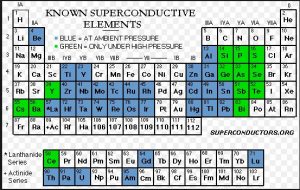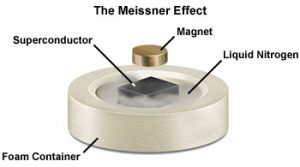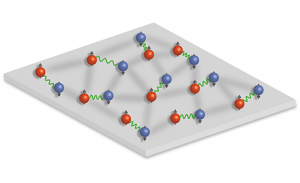One of the earliest known scientific ‘Laws’ dealing with electricity is called Ohm’s law after it discoverer, Georg Simon Ohm. As usually stated Ohm’s law asserts that when an electric voltage is placed across an object it will cause an electric current to flow through the object and that the amount of current you get for a certain voltage is a property of the object called the resistance. In equation form:
V=I*R
Here voltage is V, current is I and resistance is R. In other words double the voltage and you get double the current through an object or one third the voltage will get you one third the current through the same object.
But even before Ohms time scientists knew that some materials, mainly metals, allowed a great deal of current to flow while other materials allow only a tiny current. In terms of Ohm’s law metals had a low resistance while most non-metals had a much higher resistance.
This is why we use metals like copper to conduct electricity and non-metals to insulate us from electricity. The range of possible resistances in different materials is enormous, the resistivity of glass for example is a million trillion time higher that of copper!
Scientists also soon learned that the resistance of metals depends on temperature with lower temperatures causing a drop in resistance. In 1911 the physicist Kamerlingh Onnes was trying to see how far this reduction in resistance would go when he discovered that the resistance of Mercury suddenly dropped to zero at a temperature of about 4 degrees Kelvin (about -270 degrees C).
Before long many elements were found to have similar critical temperatures where their resistance disappears, although it is a curious fact that the two best normal conductors, silver and copper, never become superconductive. The image below shows the familiar periodic table of the elements with those elements that have been found to go superconductive highlighted.

Now in practical terms the use of superconductive materials in our electrical systems would be extremely valuable. This is because almost one half of all the electricity the human race produces just gets eaten up by the resistance in the wires getting to your house. (For example your toaster uses the resistance in its coils of wire to generate the heat that toasts your bread)
However superconductors only exist at very low temperatures and even after a hundred years of research the quest for a ‘Room Temperature Superconductor’ has only progressed to a temperature of about 90K (around -180ºC). Very strangely the materials that are now known to become superconducting at the highest temperatures are ceramics that at room temperatures have very high resistances.
At present the best theory we have to explain the phenomenon superconductivity describes it as a pairing up of the electrons in the material, one electron having it’s spin up while its mate’s spin is down. The pair as a whole therefore has no spin and in the strange world of quantum physics they can now zip past the atoms in the material without the collisions that cause resistence.
The image below shows one of the stranger aspects of superconductivity where a magnet is actually being repelled by, and therefore floats above a slab of superconducting material.

Now a group of scientists at the Institute for Theoretical Physics of the University of Heidelberg in Germany has succeeded in opening a new avenue for research by creating a two-dimensional structure of atoms and observing the behavior of the electrons of the atoms. They did this by using focused laser beams to confine the atoms of an ultracold gas into a layer just one atom thick. According to Professor Selim Jochim who heads the research “This means that electrons in the system can only move in two-dimensional planes.”
Then using a technique called radio-frequency spectroscopy, similar to a medical MRI, Professor Jochim’s team discovered that the electrons were pairing up in the same manner as in a superconductor. More than that, they found that they were able to cause the pairings to occur at temperatures several times higher than the known critical temperature of the atoms of the gas. The image below shows a representation of the experimental result.

Whether and how soon this research will lead to large-scale use of superconductors in our electrical grid is unknown. However every new discovery about the phenomenon of superconductivity brings that day a little bit closer.
